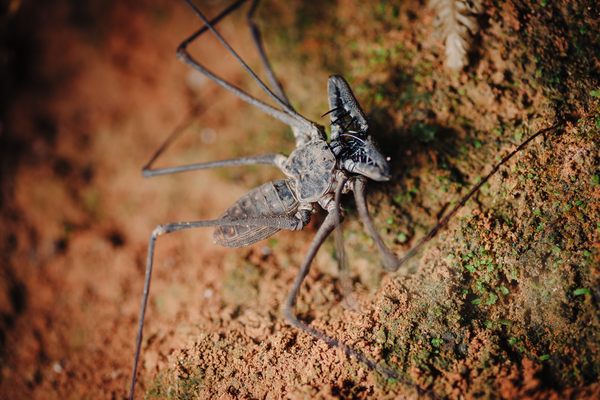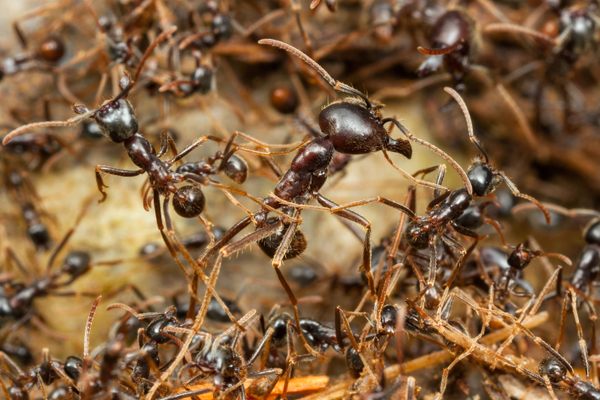Birds Rub Ants on Themselves, and No One Knows Exactly Why
It’s called “anting,” and it is weird.

Birds can be weird, and one of the weirdest things they’ve been known to do is called “anting.” Though the specifics can vary, at its most basic, anting involves birds rubbing ants on themselves. To date, over 200 species of birds have been observed engaging in this behavior, and no one is entirely sure why they do it.
Among the most common birds found to indulge in anting behavior are songbirds such as the blue jay, which were the focus of an extensive 2008 study on the phenomenon. But species as varied as crows, turkeys, and owls have all been observed indulging in the little understood ritual.
There are two types of anting, “passive” and “active.” In passive anting, birds will lay down on anthills, feathers spread, allowing hundreds of ants to swarm their bodies, climbing between their feathers. During active anting, birds have been seen to pick up ants in their beaks and frantically rub them all over their bodies and under their wings. After the ant exposure is over, the birds often eat the ants. However, the behavior has also been observed in species that do not normally eat ants.
Ever since the behavior was first observed, around the 1930s, ornithologists and researchers have been attempting to find an explanation for it. A number of leading theories have to do with chemicals produced by the ants themselves. Many ant species observed to be used in anting behavior belong to the Formicinae subfamily, which produce formic acid when threatened. That formic acid could fuel the function of anting behavior in a number of ways.
One theory is that the acid secreted by the ants kills mites and other parasites that might try taking root in a bird’s feathers. Another possibility is that formic acid acts as a sort of natural balm, soothing the irritation caused by molting.
Yet another theory goes that anting is a way to prepare ants to be eaten. By rubbing the ants on their wings, and forcing them to secrete their acids, the damaging fluid is drained, making them safe to eat. The authors of the blue jay study argue that this hypothesis seems to be the most likely, since the birds they observed ate non-formic-acid-equipped ants without wiping them on their wings.
Finally, as noted by NPR and Vice, it’s possible that bird anting might just feel good. This theory posits that the formic acid produced by ants might act as a sort of stimulant for birds, and might even be addictive. The idea is supported by the hopping birds do while they are rubbing down their wings. In the 2011 book Field Guide to Urban Wildlife, author Julie Feinstein refers to formic acid as “bird catnip.”
Opinion is still mixed as to whether birds are bathing in ant acid for food, cleanliness, fun, or some combination thereof. Complicating things further, birds have also been observed performing anting behavior with things other than ants, including beetles, millipedes, lemon rinds, and even cigarette butts. It remains one of the more delightful mysteries of the avian kingdom.



















Follow us on Twitter to get the latest on the world's hidden wonders.
Like us on Facebook to get the latest on the world's hidden wonders.
Follow us on Twitter Like us on Facebook